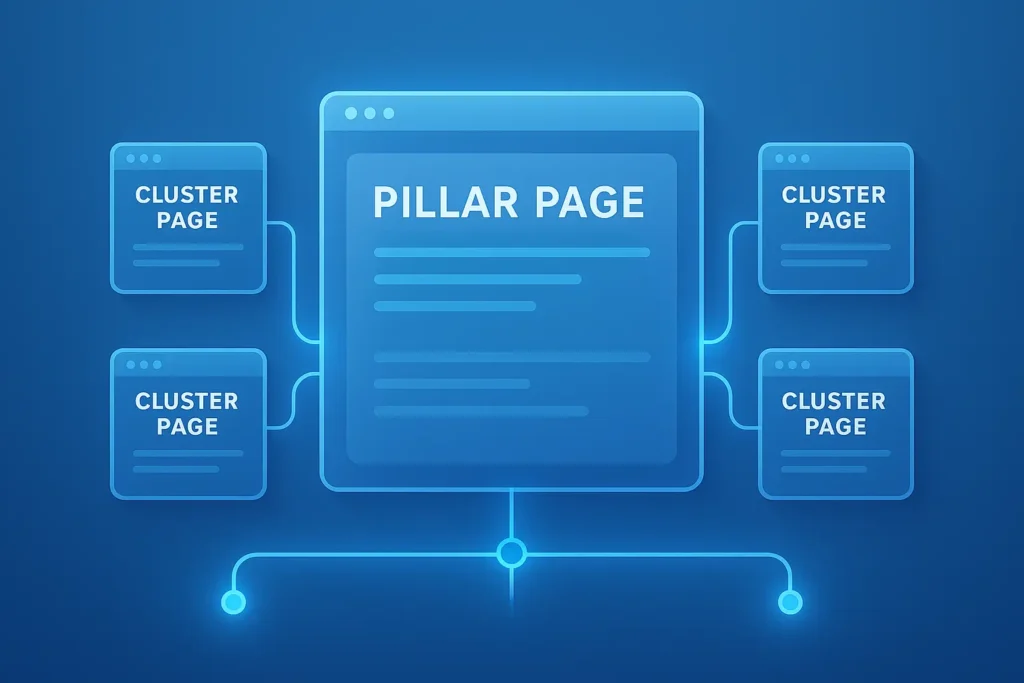Building topical authority is no longer just about publishing a handful of keyword-targeted posts. Search engines are smarter today; they evaluate the depth, breadth, and connectedness of your content. If your site is structured in a way that demonstrates expertise and covers subjects comprehensively, it stands a much better chance of being seen as authoritative. One of the most effective ways to achieve this is through layered internal content hierarchies.
Why Topical Authority Matters in SEO
Topical authority is the signal that a website deeply understands the subject it covers. Instead of relying only on backlinks or keyword density, search engines analyze whether your site provides comprehensive information on a theme. For instance, if you’re writing about “solar energy,” you need more than a single article. You need clusters of content that address different aspects — technology, benefits, installation, maintenance, challenges, innovations, and more.
The stronger your topical authority, the more trust you gain not only from search engines but also from users. A well-structured content hierarchy ensures that readers find answers quickly and that your site becomes their go-to resource.
What Are Layered Internal Content Hierarchies?
Layered hierarchies are essentially structured content ecosystems. They break down a broad topic into main categories, subcategories, and supporting articles.
Think of it like this:
- Pillar Content: Comprehensive, authoritative guides that target broad themes.
- Cluster Content: Supporting posts that tackle narrower subtopics related to the pillar.
- Interlinking: Strategic connections between all related pieces to signal relevance.
By layering content in this way, you’re not just writing blogs — you’re engineering a map of knowledge. This hierarchy helps search engines understand your expertise while also making navigation intuitive for your readers.
How to Build an Effective Content Hierarchy
1. Identify Core Pillars
Start with your main themes. These should represent the backbone of your niche — the areas where you want to be seen as an authority. Each pillar should be broad enough to support multiple related topics.
2. Develop Supporting Clusters
Once pillars are set, break them into specific questions, challenges, or angles. For example, under a “digital marketing” pillar, supporting clusters might include SEO basics, technical SEO, local SEO, content strategy, or link building.
3. Interlink Strategically
This is where the hierarchy takes shape. Every cluster should link back to the pillar page, while also connecting to related clusters. The result is a web of knowledge that search engines crawl easily, signaling depth and breadth.
4. Prioritize User Intent
Always align clusters with what users are searching for. Anticipate the next question a reader might ask and create content that answers it, keeping them within your site rather than bouncing to competitors.
Benefits of Layered Content Structures
- Improved SEO Visibility: Search engines reward sites that demonstrate comprehensive coverage of topics.
- Enhanced User Experience: Readers find structured, interconnected information instead of disjointed posts.
- Authority Building: Consistency in covering all angles makes your site the reliable voice in your niche.
- Higher Engagement: Interlinking encourages users to click deeper, reducing bounce rates.
This layered approach is not about publishing more for the sake of volume, but about publishing strategically with purpose and cohesion.
Common Mistakes to Avoid
- Thin Clusters: Writing weak supporting articles that don’t add value.
- Over-Optimizing: Stuffing internal links unnaturally instead of focusing on relevance.
- Neglecting Updates: Authority fades if outdated content isn’t refreshed.
- Ignoring Navigation: A confusing menu structure undermines even the best hierarchy.
Avoiding these pitfalls ensures your hierarchy works as intended and positions your site as a true knowledge hub.
Putting It All Together
Engineering topical authority is about long-term strategy, not quick wins. By layering your content into well-structured hierarchies, you build a foundation that search engines trust and readers rely on. Think of it as curating a library rather than just writing articles.
If you want to take your SEO game to the next level, explore more strategies and in-depth guides at seosets.com.
FAQs
Q1: How long does it take to build topical authority?
It depends on your publishing frequency, niche competition, and quality of execution. Generally, measurable authority signals can take several months.
Q2: Do all websites need layered hierarchies?
Yes, especially those aiming for long-term organic traffic. Even smaller sites benefit from clear structures that guide both users and search engines.
Q3: Should I update old cluster content?
Absolutely. Refreshing older pieces with new data, insights, and links ensures they continue to support your hierarchy effectively.
Q4: How many cluster articles should each pillar have?
There’s no fixed number, but aim for enough clusters to cover the subject comprehensively. Quality and coverage matter more than arbitrary counts.
Q5: Can layered hierarchies help with voice search and AI-driven results?
Yes. Structured, interconnected content helps search engines and AI systems extract clear answers, increasing your chances of appearing in featured snippets and conversational queries.


